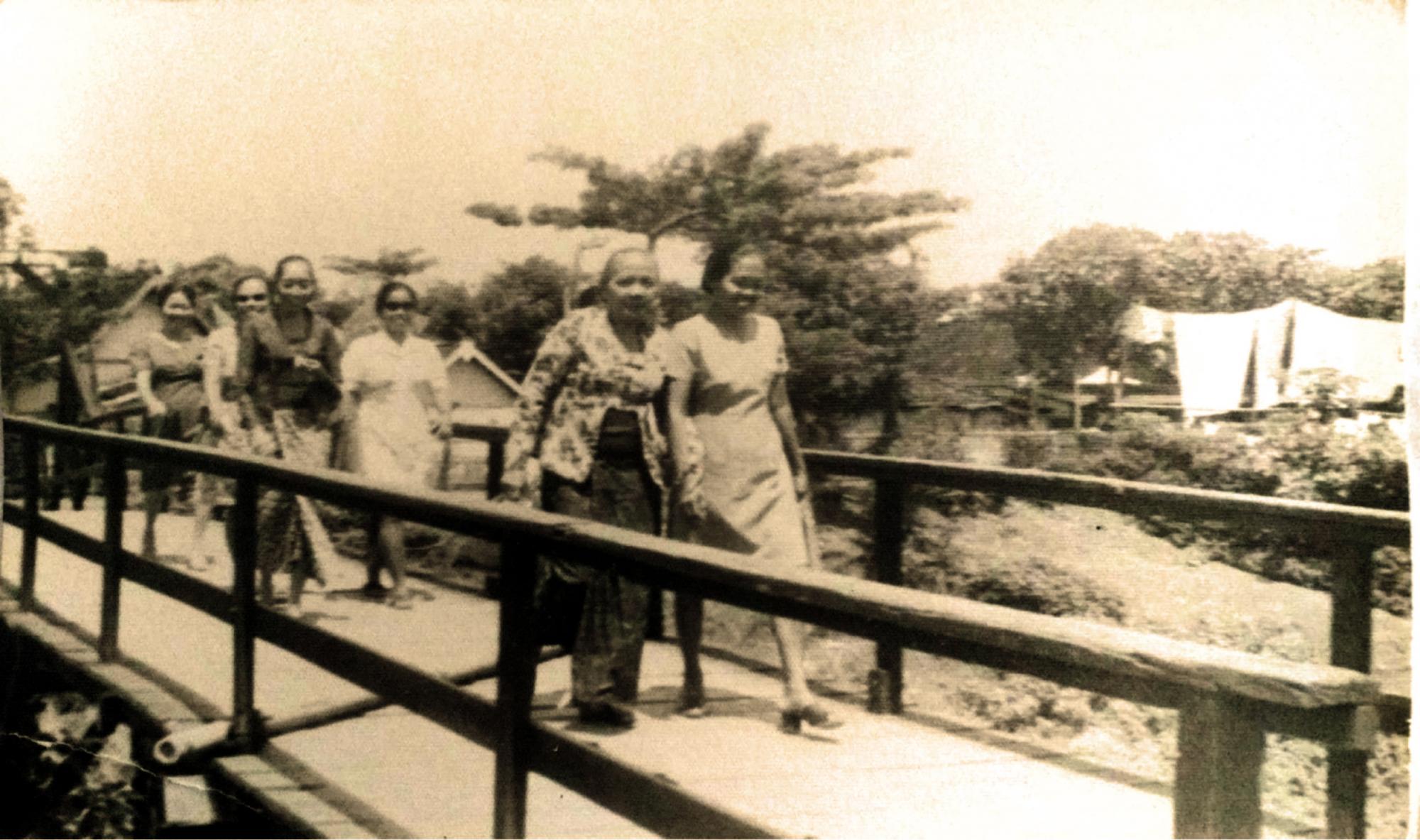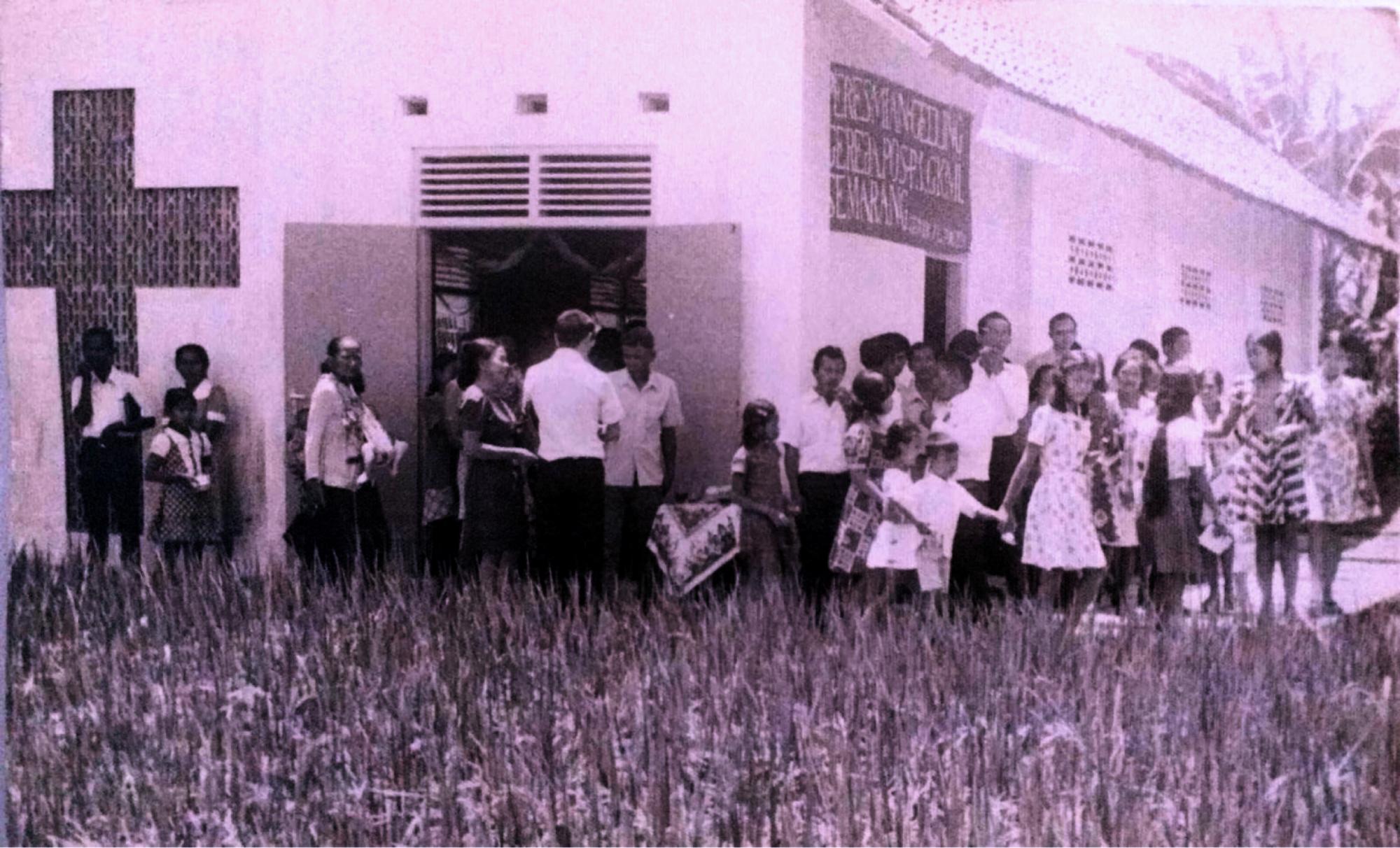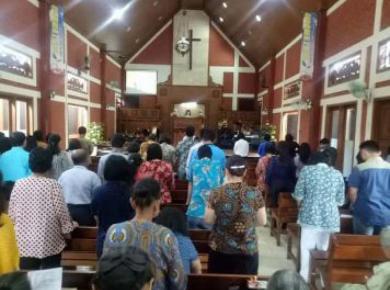Posted: July 31, 2019
A service in GKMI Lamper Mijen. Photo courtesy of GKMI.
Renewal 2027 testimony: historical profile
Renewal 2027 is a 10-year series of events organized by Mennonite World Conference’s Faith and Life Commission to commemorate the 500th anniversary of the beginnings of the Anabaptist movement. This series highlights leaders in the movement from history to the present.
Everyone in the Mennonite Christian group that started in Kudus, Indonesia, in the 1920s cooperated in preaching the gospel. They met, discussed God’s Word and praised God with songs and prayers. “This church really reminds us of the Jerusalem church,” wrote Johann Fast in a report to his mission board. Johann Fast was a Russian Mennonite serving among the Dutch Mennonite mission in Indonesia.
In the nearby village of Majong, “For the sake of the congregation meetings, traders close their shops. They start with prayer meetings. Not only the father prays but also the mother and children.... They thank God for diverting them from idols made of stone and wood to the living God.”
They carried out evangelism not only on certain days and times, but every day and in various relationships.
 This participation contributed to rapid church growth in the Kudus region, writes Lawrence Yoder in Tunas Yang Tumbuh, Sejarah Gereja Kristen Muria Indonesia (The Growing Plant: A History of the Muria Christian Churches of Indonesia).
This participation contributed to rapid church growth in the Kudus region, writes Lawrence Yoder in Tunas Yang Tumbuh, Sejarah Gereja Kristen Muria Indonesia (The Growing Plant: A History of the Muria Christian Churches of Indonesia).
In 1922, Chinese Christians in Tanjung talked about their faith to the Javanese who came to their city even though their permission from the government was only to preach the gospel to Chinese people. As a result, a group of Javanese from Karangrowo came asking to be baptized.
This growing Mennonite church in Kudus with branches in Majong and Tanjung was truly vibrant and active, even beyond tribal boundaries.
Evangelistic fervour
What became the GKMI synod was a group of churches originally centred around Mount Muria (Kudus, Jepara, Pati, and surrounding areas). Their evangelistic fervour began crossing to Semarang, the capital of Central Java, about 50 kilometers from Kudus, some three decades later.
The church in Semarang, which began meeting at the house of Sie Tiang Djwan 23 February 1958 was declared an independent congregation by the GKMI Synod in 1960.
From the beginning, GKMI Semarang congregation had a high enthusiasm for preaching the gospel and planting new churches. Now, they have eight branch churches.

In 1967, Rev. Samuel Setianto (pastor of the GKMI Semarang church) took several young people – including Yesaya Abdi, Agus Suwantoro, Rina, Giok Hwie, Esther Djajadihardja, and Han Fie – to evangelize in the Jeruk and Lamper Mijen area. They preached the gospel from house to house and also through revival and healing services.
At first, they held a fellowship in the house of the church members, including Jaelani, Kusnan, Sukiran, and Robin Mukiyi.
Interestingly, almost all members of the evangelism team in Jeruk and Lamper Mijen area were of Chinese ethnicity, while those who were evangelized were mostly Javanese.
More church plants
In 1972, the GKMI Semarang congregation sent Andreas Parwadi to become a full-time evangelistic worker in GKMI Jeruk Branch. Two years later, GKMI Jeruk Branch began to carry out the construction of church building on the land they had bought in Lamper Mijen.
On 19 May 1977, Andreas Parwadi was ordained as a Guru Injil (literally: gospel teacher) and was confirmed as the pastor of the GKMI Semarang Church, Lamper Mijen Branch.
The group continued to grow and develop. On 1 April 1981, GKMI Semarang Lamper Mijen Branch was established as a GKMI congregation and Andreas Parwadi was ordained as a pastor. The members of the congregation’s first board were Lemuel Muhadi (chairman), Brotodiharjo (secretary I), Nurwiyono (secretary II), Timothy Marimin (treasurer).
—a Mennonite World Conference news release by Paul Gunawan, GKMI historian. Translated from Bahasa Indonesian by Mark Ryan, editor of Berita GKMI magazine.
Watch for Installment #2 of this history of GKMI: Indigenizing the church in Lamper Mijen.


Join the Conversation on Social Media
FacebookTwitterInstagramFlickrYouTube